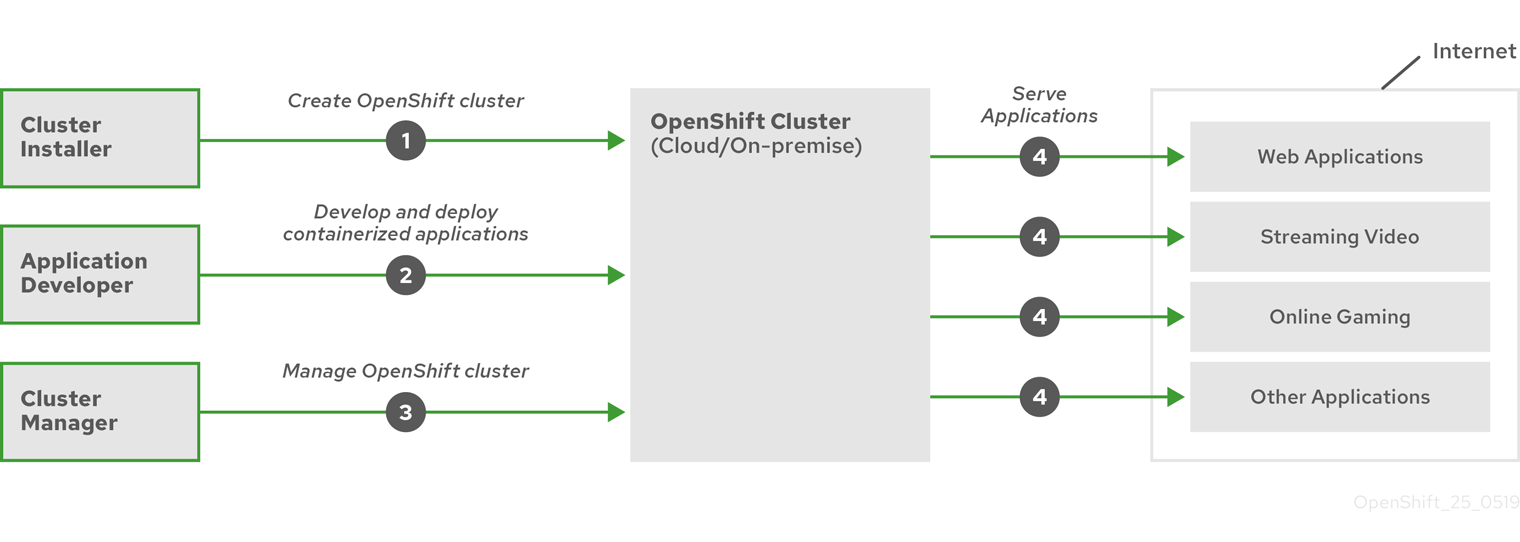CP4I Modernization Practicum Workshop Singapore
Introduction
Topic 2.1: Cloud Pak for Integration
Topic 2.2: Introduction to Cluster
Topic 2.3: Introduction to OpenShift
IBM Cloud Pak for Integration
IBM Cloud Pak for Integration brings together IBM’s market-leading middleware capabilities to support a broad range of integration styles and use cases. With powerful deployment, lifecycle management, and production services running on Red Hat OpenShift, it enables clients to leverage the latest agile integration practices, simplify the management of their integration architecture, and reduce cost. Deployment of IBM Cloud Pak for Integration requires RedHat OpenShift cluster.
A IBM Cloud Pak® for Integration installation consists of a Red Hat® OpenShift® Container Platform cluster with one or more Cloud Pak for Integration operators installed and one or more Cloud Pak for Integration instances deployed.
In general, you can have one of the following clusters:
-
Managed OpenShift clusters, on which some operation, monitoring and billing are integrated with the cloud-platform provider. These clusters are built and managed by the cloud-provider’s interface:
- RedHat OpenShift on IBM Cloud (ROKS)
- RedHat OpenShift on AWS (ROSA)
- Azure RedHat OpenShift (ARO)
-
Installer Provisioned Infrastructure (IPI) clusters which are created using the openshift-install command. These IPI clusters can typically be enhanced to accommodate infrastructure and storage nodes using the gitops scaffolding.
- Azure
- AWS
- VMware
-
User Provisioned Infrastructure (UPI) clusters, which are built manually to accommodate an unsupported environment. Although we did not prefer this path, we understand that there are valid customer situation that may warrant the UPI implementation. However, with UPI, you are responsible on building the additional structure so that the cluster is production ready.
Several customer may also request that the cluster would not have internet access (i.e restricted network or airgapped). Although most can be fulfilled with IPI airgapped cluster, some specific deployment may need to be UPI.
For the purpose of this workshop, we will be using IBM Cloud Pak for Integration on IBM ROKS
Introduction to Cluster
If you’re completely new to the concept of clusters, do follow the quick and easy tutorial here to learn more
With Red Hat® OpenShift® on IBM Cloud®, you can create highly available clusters with virtual or bare metal worker nodes that come installed with the Red Hat OpenShift on IBM Cloud Container Platform orchestration software. You get all the advantages of a managed offering for your cluster infrastructure environment, while using the Red Hat OpenShift tooling and catalog that runs on Red Hat Enterprise Linux for your app deployments.
Introduction to OpenShift
OpenShift is a platform that allows you to run containerized applications and workloads and is powered by Kubernetes. It is an offering that comes with Red Hat support, regardless of where you choose to run your applications and workloads.
One of the big advantages of OpenShift is being able to take advantage of public and private resources which includes bare metal or virtualized hardware whether it is on-premise or on a cloud provider.

This is the high level OpenShift Container Platform overview.
For developers, OpenShift has two different ways of enabling them to work with their platform. They can take advantage of either the CLI or a web console.